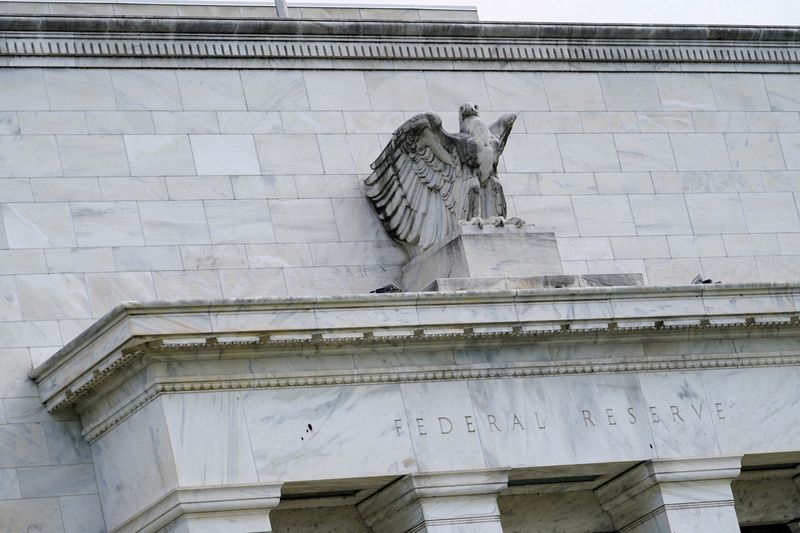Column-US inflation may soon undershoot Fed’s 2% target: McGeever
2024.09.09 10:38
By Jamie McGeever
ORLANDO, Florida (Reuters) – After grappling with the strongest U.S. price pressures in four decades, it’s hard for investors to adjust to the notion that inflation could soon undershoot the Federal Reserve’s 2% target.
But they should.
While traversing the “last mile” in inflation’s retreat to 2% is proving to be typically arduous, warning signs are flashing that the biggest risk for markets and policymakers is not “higher-for-longer” inflation, but the virtual disappearance of price pressures.
Falling short-term average inflation metrics, slumping commodities prices, a softening labor market, and cooling wage pressures are all pointing one way: disinflation.
While the August employment report on Friday added some fuel to this fire – payrolls growth came in under expectations even as wage growth accelerated and the unemployment rate ticked lower – the reaction in financial markets added a lot more.
Bond yields tumbled, the yield curve steepened sharply and oil prices slumped. At one point, rates futures markets were leaning towards the Fed cutting rates by 50 basis points later this month and by almost 250 bps by the end of next year, a sign of the disinflationary forces traders were pricing in.
This response is in keeping with history. The Fed has conducted easing cycles of 250 basis points or more four times since former Fed Chair Alan Greenspan took over as head of the U.S. central bank in 1987. Every one has been associated with a rapid decline in inflation, three of them ending in significant undershoots of the Fed’s 2% target.
COMMODITY WARNING BELLS RING
Globally, disinflationary pressures have been intensifying for some time, especially in the euro zone and some key emerging markets, like India and Indonesia. And China is battling against outright deflation.
Meanwhile, futures have posted their lowest close since December 2021. Remarkably, oil is down almost 25% from a year ago – a significant fall that will help depress overall price pressures when imputed into next year’s inflation calculations.
Oil and commodity prices have less of a direct impact on U.S. inflation than they did 20 or 30 years ago. The economy is more services-oriented and less industry-intensive than it used to be, and the U.S. is now a net oil exporter. Still, U.S. gasoline futures are at their lowest level since March 2021, having fallen nearly 15% last week alone.
Price swoons like that cannot be ignored and will put downward pressure on inflation. So will wages, the biggest single cost for most companies in America, as the labor market deteriorates.
BALANCE OF RISKS
Of course, there are counter signals indicating that U.S. growth is still humming along at a remarkably strong pace considering where we are in the economic cycle.
The dominant services sector continues to expand at a healthy clip, retail sales in July rose more than three times faster than expected, and the Atlanta Fed’s GDPNow model is still pointing to GDP growth of 2.1% in the third quarter.
At the same time, shelter inflation – a proxy for the cost of housing – is still running at a sticky 5%. The longer headline and core annual inflation remain above 2%, the greater the risk that consumer inflation expectations will stay elevated.
But when considering where the majority of trends are pointing, it is clear the balance of risks is shifting away from inflation and toward growth.
“If it is a ‘soft landing,’ the return to 2% will be gradual. If it is something more damaging, the risk of an undershoot will be significant,” says James Knightley, chief international economist at ING.
PARADIGM SHIFT?
It is also worth remembering how much the Fed – and other developed market central banks – struggled to get inflation back up to 2% in the decade following the Global Financial Crisis. Many of the trends believed to underlie that struggle – like ageing demographics – have not changed.
And while spending on technology could spur growth in the years ahead, advancements in artificial intelligence should, in theory, put downward pressure on prices. So in order to accept that U.S. inflationary dynamics truly have shifted, one needs to believe that globalization is in sharp retreat, energy markets will continue to fracture and protectionism will keep rising.

That could be true, but it is hardly an open-and-shut case. The notion that U.S. inflation could undershoot the Fed’s target – and stay low – has been virtually unthinkable for much of the post-pandemic period, but it is now very much in the realm of possibility.
(The opinions expressed here are those of the author, a columnist for Reuters.)
(By Jamie McGeever; Editing by Paul Simao)








